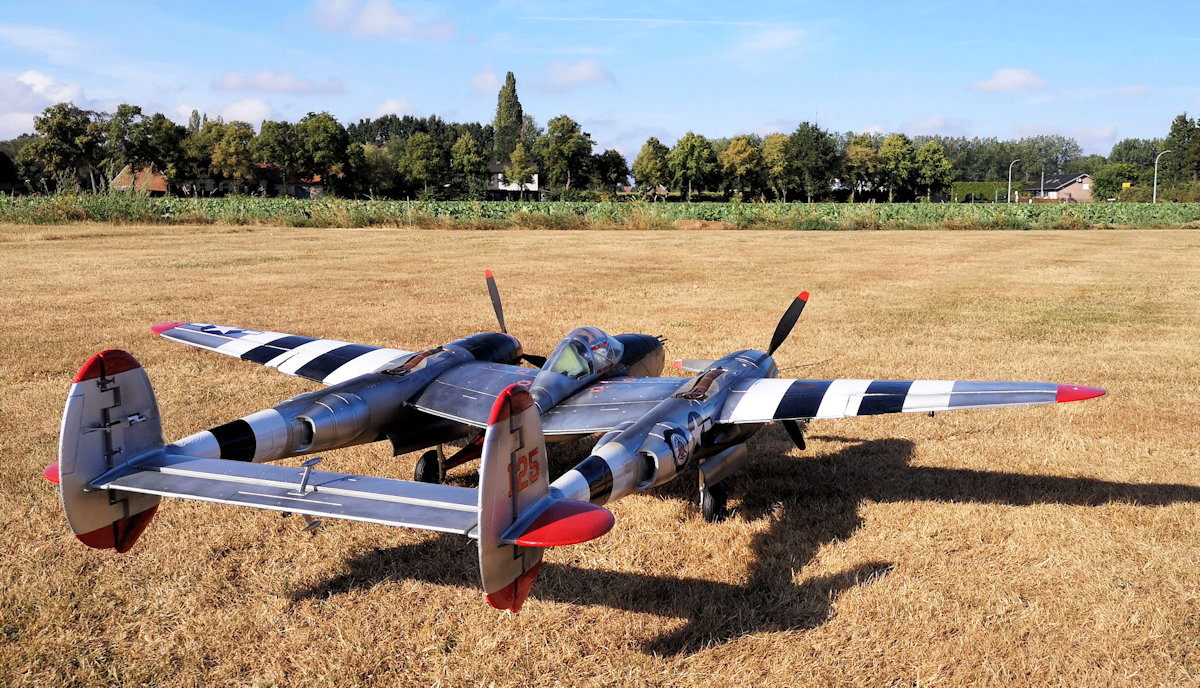The Second World War Bomber Liberator is one of the most recognizable WWII aircraft of all time. Serving in every theater of that global conflict, the B-24 fought to bring its brave crews home through unimaginable danger. With humility and reverence, Flightline is proud to introduce the world’s first foam electric B-24 Liberator, in remembrance of the crews who gave the ultimate sacrifice and those who carry on its memory. The FlightLine B-24 Liberator is approximately 1/16.7 scale, with a 2000mm wingspan and 1230mm length, and is constructed from EPO foam and reinforced with integrated aluminum, carbon fiber, plywood, and plastic structures. The FlightLine B-24 uses four 3530-860kv brushless outrunner motors, 30A ESCs, 9.5 x 7 counter-rotating propellers, and a separate 5A UBEC. A pair of 4s 14.8v 3400 mAh lipo batteries powers the aircraft in of 1000km/h, for 5-10 minutes based on a pilot’s throttle management. Mid-throttle cruising for 7+ minutes of scale-style flying. The outboard motor pair and inboard motor pair are powered by separate flight batteries, allowing for powered landings in the event of one battery losing a cell. A 70mm tall nose wheel and 85mm tall main wheels provide stable operation on grass runways and split flaps aid in low-speed flight and landings.
Modifications
Used different types of Painting, Airbrush, and Weathering Techniques and used Oracover ironing film on top of the foam to change the look of this model. Added 3D printed interiors for the Turrets, Cockpit and Pilots, and additional Gunners. A Bomb space was created and two Bomb Doors were designed and 3D printed. The Top Turret can rotate remotely 360 degrees, and the Front and Back Turret are moving together with the Rudder control. The Bomb Space can contain 4 3D printed WWII Bombs or a Parachute with Soldier or Relief Supplies. Modified landing Gear with other tires. Added Spektrum Airspeed, Temperature ESCs, Flight Voltage, and Power Telemetry. Installed Spektrum 9 Ch with AS3X Gyro technology RX. Used a separate UBEC from Castle Creations and an Optipower Ultraguard battery with fail-safe switch PCB. Safety System with Fuse so the Battery Pair starts working separately when a problem occurs (Short Circuit or a Defective battery Cell). In normal operation, both Battery Packs are keeping the same Voltage. Installed a Sound Module Aspire from MrRCsound with two Dayton Audio DAEX25FHE-4 High-Efficiency Exciters and the B-24 Multi-Engine Sound to maximize the allowable sound pressure to 84 dBA at 7m distance. Added navigation lights and landing lights.
Aircraft Characteristics after Modifications
Scale: 1/16.7
Wing Span: 2 m
Length: 1.3 m
Flight Weight: 5 kg
Wing Aera: 40 dm2
Wing Loading: 125 gr/dm2
Wing Cube Loading: WCL 19.7
Power: 4S 6600 mAh
Motor: 4x 3530 KV850 Outrunner
Propeller: 4x 9.5x7 3-blade counter-rotating
Stall Speed: 48 km/u
Sound Pressure: <85 dB(A)/7m
Links
Spektrum – Meaningful Telemetry for Airplanes
Videos
Photos









